The Ministry of Defence has awarded a contract worth approximately £250m to progress the design and development of Tempest, the UK’s Future Combat Air System (FCAS).
The contract, signed by BAE Systems, officially marks the start of the programme’s concept and assessment phase.
According to the firm in a news release:
“Continued funding of Tempest underlines the UK Government’s confidence in the progress and maturity of the programme, which is set to deliver the military, industrial and economic requirements of the national combat air strategy. The programme is being delivered by Team Tempest – combining the expertise of the UK MOD, BAE Systems, Leonardo UK, MBDA UK and Rolls-Royce. Working with international partners, the team is leading progress towards a UK-led internationally collaborative Future Combat Air System which will ensure the Royal Air Force and its allies retain world-leading, independent military capability. The concept and assessment phase contract will see the partners develop a range of digital concepts, embedding new tools and techniques to design, evaluate and shape the final design and capability requirements of Tempest.”
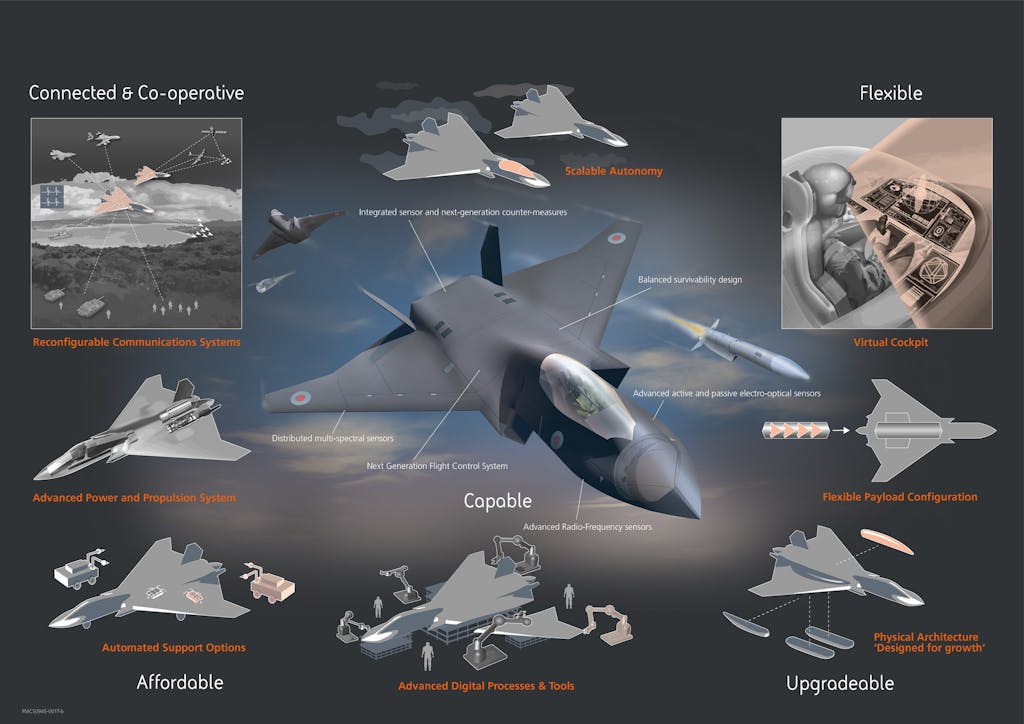
Ben Wallace, UK Secretary of State for Defence, said:
“Today marks a momentous step in the next phase of our Future Combat Air System, with a multi-million pound investment that draws on the knowledge and skills of our UK industry experts. Boosting our already world-leading air industry, the contract will sustain thousands of jobs across the UK and will ensure that the UK remains at the top table when it comes to combat air.”
Chris Boardman, Group Managing Director of BAE Systems’ Air Sector, added:
“Working with our industry partners and the Ministry of Defence, we are on track to deliver an ambitious programme for the UK, which will provide a highly advanced and sophisticated air defence capability, capable of countering future threats and safeguarding our national security and defence. The funding announced today marks a critical next step for the programme and, with our partners, we will work together to define the technical and capability requirements and develop the concept which will bring Tempest to life. Tempest offers an exciting opportunity for the next generation of talent to develop rewarding careers, contributing to important work in support of the defence of our nation. The coming years represent one of the most exciting periods in the history of our industry and, as a team, we have a chance to be part of something genuinely historic, transforming the way we develop and deliver.”
Recently however we reported that the Tempest project has been given an “amber/red” rating by the Infrastructure Project Authority, warning more funding is required or their could be a delay in the aircraft entering service.
According to the 2021 Annual Report on the Government Major Projects Portfolio from the Infrastructure and Projects Authority, which can be found here, Tempest is categorised with a level of risk.
Through the Integrated Review of Security, Defence, Development and Foreign Policy the Future Combat Air System received investment for the first 4-years to complete the Concept and Assessment Phase. A phase that will complete an Alternative System Review of the Future Combat Air System including the Core Platform, as well as establishing the international partnerships.
The level of investment was significantly less than required, however it preserves the feasibility of the programme within current parameters, but adds significant overall programme risk, particularly to the assumed date for Initial Operating Capability. The Concept and Assessment Phase will provide the evidence for Programme viability including level of additional investment and/or other options for the provision of Combat Air. Investments and milestones beyond this phase are subject to a margin of error in terms of time, cost and performance that will be refined prior to the next decision gate.”
What does ‘Amber/Red’ mean?
The IPA describe this rating in the following way:
“Successful delivery of the project is in doubt, with major risks or issues apparent in a number of key areas. Urgent action is needed to address these problems and/or assess whether resolution is feasible.”
What is Tempest?
Tempest is the RAF’s next generation combat aircraft, coming into service from 2035 to replace the Typhoon.
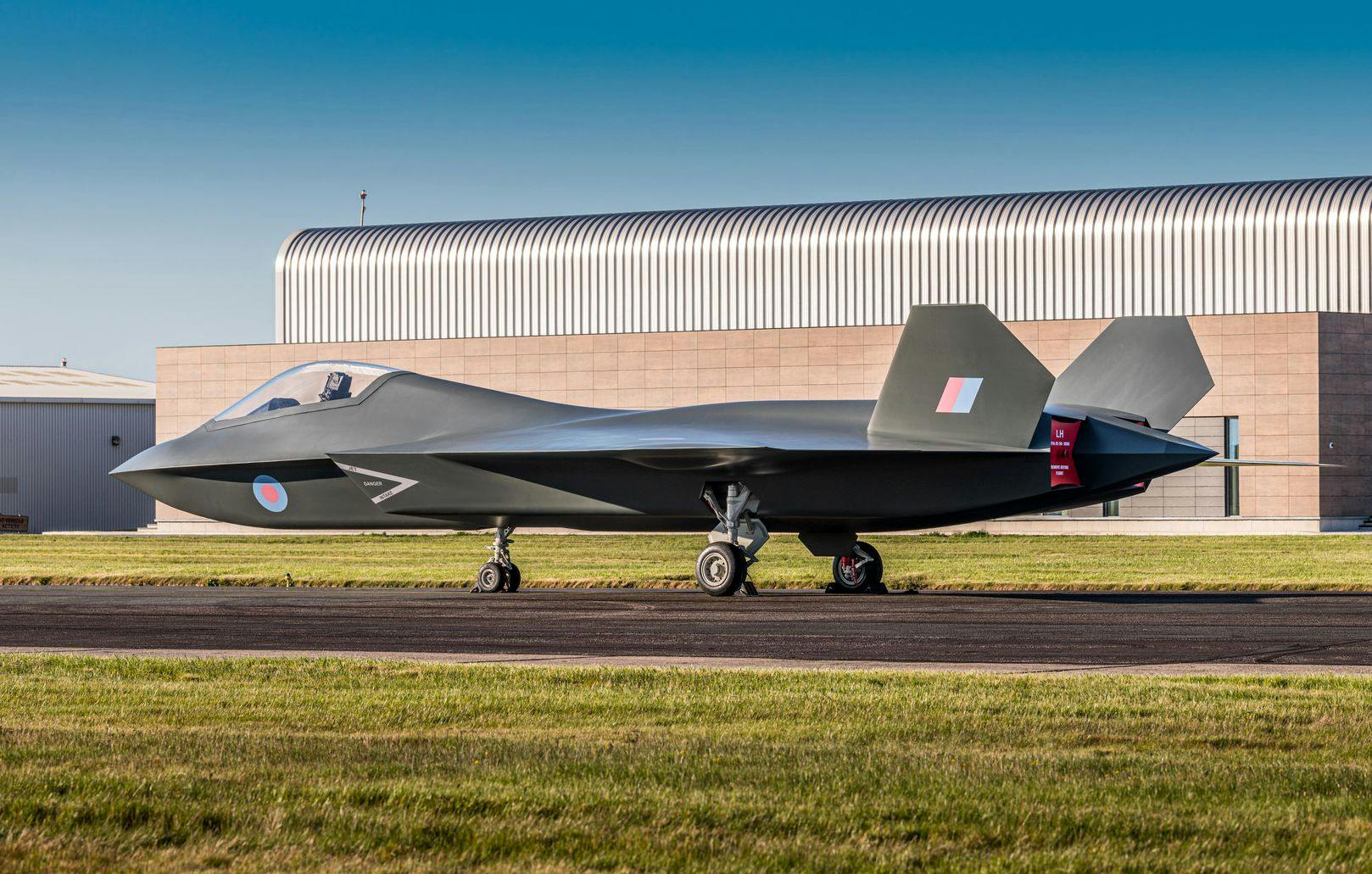
The report goes a bit more in-depth than I just have.:
“Future Combat Air will play a vital role in the United Kingdom’s military strategic capabilities for decades to come, enabling us to defend the United Kingdom, our allies, and make a decisive contribution to global security. The Future Combat Air Systems Programme will design and deliver innovative systems of highly networked crewed and uncrewed air vehicles, sensors and effectors to be able to operate in a range of complex and evolving threat environments and preserve operational advantage for future decades.”



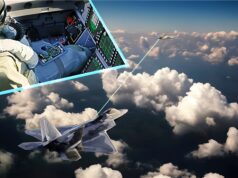
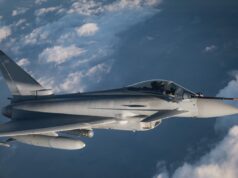
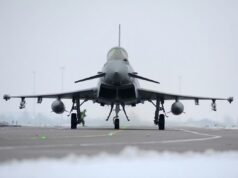
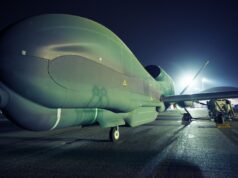




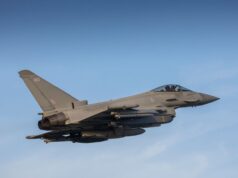

What a difference a week makes!
😂 😂 =
Encouraging news and considering this project has possibly reduced the number of F35’s being procured, it better go-ahead for the RAF’s sake! Such projects give me constant unease as they are susceptible to so many factors, and interfering politicians being the biggest! I wish the development team well, they will need it.
Is anyone watching the ‘Starship’ launch site on U-Tube, Musk is doing in months what it takes NASA years to achieve. The rate of rocket development and launches is breathtaking. Maybe, the Tempest programme needs to look at how today’s new space giants are delivering such advances in a relatively short time. Branson, Musk and the Amazon chap, all going in one direction and that is up. Typical aircraft development time and testing needs an overall, and I suggest they look no further than the above gentlemen?
Actually we’ve had the best industry in the UK for rapid design and deployment for years, Formula 1. Its lead this approach for decades, if you’re not turning design into prototype to deployed to the car in weeks through a season your soon left behind. Even the USAF has said they will use F1 concepts in their next fighter program.
Exactly and this is the form of promoting global Britain we should be buying into over a yacht (unless the two are intimately linked somehow) it’s amazing what F1 companies are doing, McLaren and Williams technology at the forefront of Formula E not that anyone would know it the latter work integral too in the practical deployment of laser weaponry. Again Arm, who knows much about them and the likes of Herman Hauser and Chris Curry and others or their team, true technology innovators who have achieved on the World Stage, but people all know that charlatan Alan Sugar a minnow by comparison. We need to change and promote the real achievers who are behind work that is amongst the best in the world.
Presently Austria and Germany get the credit for what Red Bull and Mercedes achieve in F1 yet most of that success beyond the investment is done in this country by British engineers including design of the Merc engine who’s designer was a former Cosworth employee. Yet only those in the know realise all this. Our achievements at the top end are comparable to anyone it’s what’s below and the fact we don’t promote the cream or support it enough that’s the problem. A German engineering student told me years back how well regarded Britain is in engineering excellence it’s a shame they know it better than we do. At least with Reaction Engines belatedly some effort is being made as is support for our micro Satellite business and Novel rocket launch systems for them in Scotland and Cornwall. Just see what Rocket Lab and others are achieving to see the possibilities. As an aside it’s worth following the Angry Astronaut on YouTube who seems to promote (slightly over promote perhaps) British efforts far more than any agency over here can be bothered to do. Don’t see a yacht changing that but we will see.
if only Williams could get at the forefront of F1.
There owner killed his own team, with his poor judgment, over drivers and chasing UNICORNS.
Good example expat, the faster they develop Tempest (hopefully) the sooner a prototype can start flying. To be able to display the prototype could win new customers, this practice has been used before. I just feel that designing brand new fast jets is directed by a huge dusty old book of good practises, which does not mean it’s wrong, just full of time-wasting dogma and caution? Using modern and leading-edge technology such as 3D printing and prototyping should cut years off R&D. obviously, they will use such means as long as the funding is there to purchase the systems??
I do follow progress at SpaceX’s Boca Chica site on a daily basis and think it is fantastic what is being done there but I do think that expat’s example of F1 is the better one (an industry that I had some involvement with during my career during which time I dealt directly with development teams in McLaren, Williams and Ferrari).
Were the UK to adopt SpaceX’s development style there would need to be considerable secrecy with the media kept totally in the dark during the early stages of development because your wish to get a prototype flying soon, in SpaceX’s world, would involve about 5 full scale prototypes having spectacular crashes before the 6th one maybe just about managed to make it back to land without blowing up. I am pretty sure that the tabloids would delight in being able to report a Tempest prototype crashing and then only a couple of months later be able to report another one crashing, and then 6 weeks later another, and then another and then another.
I’m not knocking the SpaceX approach, as you and others observe the concept of building prototypes for designs that are nowhere near fully evolved, probably often with known serious flaws that will be corrected in future iterations, but still flying (or launching them in SpaceX’s case) those prototypes on the basis that they will learn a lot from a failure is allowing development at a pace that NASA (and Blue Origin that I would say more closely follows the NASA model) can only dream of. Unfortunately however it would almost certainly generate simply dreadful headlines in the UK and perhaps jeopardise the public’s support for future funding.
SpaceX can implement its fail-often, fail-early methodology because Musk controls the purse strings (at least to a large extent), has proved the fail-often but learn more each time approach works (e.g. with Falcon development), and most of the people that follow SpaceX closely understand the development methodology being used. I’m not sure the Tempest program would get such an easy ride especially from a UK public informed by a media that delighted in misrepresenting and sensationalising every prototype that crashed.
Julian, I watch Boca Chica every morning over breakfast and it gets me out of bed with a spring in my step! Launch tower nearing completion, and launch platform ready to be put in place. Great fun! I chose Musk’s efforts merely to express the spirit of the whole programme. I still don’t believe building a full-size concept Tempest airframe to fly unmanned to get early and vital data in the environment it will work, is an impossible task? Remember, the flyable Euro fighter that lead to Typhoon? As for crashes, I haven’t heard too much about advanced drones crashing and some are the size of a Hawk trainer? Let’s face it, 30% of Tempest operations will most probably be unmanned, and from what I’ve seen, 70-80% of the plane’s functions are not dependant on a pilot. In many ways, the future RAF pilot’s function will be there just in case, not unlike a Docklands train guard? As for press reaction to failures, that’s just the media making trouble, but ultimately, it’s fish and chip wrapping within days.
Quite.
The problem with ‘agile’ development is that it is a defence money pit.
T31 et al are new thinking in terms of bailing costs down.
If you can solve the agile -> cost ballon issue you are onto a winner.
That said I sat in too many meetings where someone had a bright idea. I would observe that there was a zero missing from a parameter to get there and then it would be green light time / money wasted and all in the bin 18 months later.
True but F1 cars are no where near as complex as an F-35 or B21 bomber.
Not to mention the amount of code that goes into an aircraft as compared to a car.
Well that started off well but faded I’m afraid. I follow Space X constantly and it is amazing what Musk is achieving so quickly though he still misses self imposed and promised deadlines quite a lot to the chagrin of NASA and Congress but then the deadlines are almost unbelievably optimistic. It certainly is the future. However the others are far less impressive. Branson has done well tbh but is a decade behind what was promised. As for Bezos and Blue Origin they have become a walking joke in the US. 18 years without even an orbital flight and who’s promised new engines for its own New Glenn and ULA’s Vulcan are endlessly delayed with potential serious consequences to NASA plans. As for Boeing the less said the better, even Lockheed Martin isn’t covering itself with Space glory. We moan here but Space X is hiding a whole lot of hurt over there from others and there is every chance the Chinese will get to Mars and even a moon base first if things continue as they are and the authorities distrust of Musk continues. Bae looks like a beacon of hope and reliability compared to most of those companies, especially its efforts in the US where it is highly regarded.
Elon Musk-good South African boy! 😉
NASA has the same problem the MOD does, they have to answer to tax payers. I don’t think they would be to happy to see Tempest prototypes dropping out of the sky just for the sake of rapid innovation and iterative design.
Furthermore, we don’t require a sixth gen capability this decade. Typhoon and the F-35 will serve us just fine for now. So I don’t think following that approach would be of much use to us.
They’d have no problem seeing a couple of prototypes dropping out of the sky if that was what was planned and advertised. So if you think there’s a chance of that, schedule a series of remotely piloted “tests to destruction” to slowly edge up to the limits. Any actual catastrophic failures will be written off by the press because they were expecting it to fail anyway.
Really?
https://www.defensenews.com/breaking-news/2020/09/15/the-us-air-force-has-built-and-flown-a-mysterious-full-scale-prototype-of-its-future-fighter-jet/
Whilst digital engineering will undoubtedly quicken the design process, the Americans plan for the NGAD fighter to enter service in the 2030’s. Similar to uk regarding Tempest. For context, flight testing of the X-35 began in 2001 , the f-35 didn’t enter service until 2015. As is the case, these programmes take years to develop.
To quote Elon Musk, as he is the topic, “ Prototypes are easy, production is hard.”
Plus the regular fireworks shows when things crash/blow up.
I’m not sure that we want to go back to the 50’s when it was normal to kill quite a few test pilots during the development of most military aircraft.
Come on chaps, falling out of the sky is a bit ‘old hat.’ They don’t need manned prototypes they could easily be unmanned, it’s no longer a taboo. I don’t necessarily go with the argument about timing, as other countries are looking at equivalent aircraft. If the UK can speed up Tempest then this would generate much-needed income plus, a huge military advantage. Waiting for appropriate service windows all sounds a bit predictable and safe. Yes, we might lose a few Tempest prototypes, but as Musk has discovered, it’s always a painful process, but that will not stop him, nor should it do likewise for Tempest. NASA is funding some of the Starship programme because it’s such a fantastic and well lead organisation.
Bezos’ is no where near SpaceX and even Branson. They’ve been having a ton of problems with their new engine that is supposed to power the new ULA rocket. And Bezos’ hasn’t even reached orbit with a rocket yet.
Well I suppose the slightly ! negative reaction from some to last weeks news may have been slightly overblown ! If this is any indication of the future this is going to feel much longer than 15 years till service entry. :wpds_envy:
I didn’t see the last weeks news as negative but the cut in the phase still stands. But too much was being read into it imo by people who have limited knowledge of large programs and their execution.
Amen. All projects at this stage are red/amber. Would anyone that writes or posts here guarantee success and mark it green? Of course not.
Spot on!, to other posters please check out all the other projects they’ve assessed, most are categorised as red or amber….and most way below the technological advancements Tempest is striving for. Personally I’d view it as a good sign and a signalled intent on commitment to this project. Let’s face it, 12 months ago even the most in the know commentators viewed the Tempest project as rather pie in the sky. On today’s news this is actually moving forward so should be applauded as such.
+100
as good as it is I do hope to the love of god this does not end up a white elephant, the mod love to announce big things only for money to be spent and then the big thing dropped for whatever excuse they can come up with
Its usually government changes that drop programs. But the MoD asking for the moon on stick usually means the budget gets blown = bad press = political opportunity.
This £250m, does it close the £250m gap highlighted by the Infrastructure Project Authority’s report – previously discussed on another thread – or is it just part of the already, declared and too small, pot.
If it is new money, happy days.
If it ain’t then we are still at amber / red risk level, which at this stage is just plain stupid. Project Management and engineering experience tells us to spend early, save later, because that way you have a better chance to get a head of the risks before you cut metal…
Nevertheless, good news that the Government is at least pushing a head with the project even if it might be setting traps for itself in the future – buts that is politics for you.
Cheers CR
Of course it isn’t new money.
And if the current phase cap were to be lifted, it would still be red/amber. Just look at all the other projects in the list.
how do u know that? u working for the KGB?
Sorry Nate but Ron is bang on, will be red/amber well beyond the flying prototype stage…all documented. Not 100% sure what Ron does but working for the KGB is unlikely lol…(sorry Ron)
ya i know i was just kidding.
Although sometimes I do wonder 😉
They’re actually called the FSB these days. You know how it is in big organisations with an image problem you can either deal with the cause or just change the name !
Mmmm and how do you know that comrade?? 😀
I have secret sources I could tell you but then I’d have to kill you ! 😁
Working for the KGB?
That’s new, I’m usually accused of working for Bae because I support their projects. Like Tempest. I think it will be a world beater if the politicians and RAF can be kept in their places 😀
Politicians and the Treasury hate to spend early (refusing to accept or understand the ‘save later’ part of the mantra) – and are thus diametrically opposed to military and civil servants on the procurement staff.
Hi Graham,
For the most part I would agree with you, but I was aware of complaints about some officers pushing to ‘get on with it’ during their time on project teams. Largely due to the way in which the preformance reporting and posting systems work.
The time in post is usually about two years, far too short for big complex projects. Secondly, the proformance is measured by ‘impact’ i.e. changes made. Whereas on a long term project often the best impact you can have is to maintain a steady course – looks much less impressive on the CV when you return to unit.
Two things need to happen. Firstly, the MoD needs to put its house in order particularly around the posting and reporting systems to influence behaviours in a more positive – whole programme – manner. Secondly, the Treasury needs to but out of the project detail, they are not qualified. However, to be fair to the Treasury the MoD was making such a hash of things the pressure was on the Treasury to get involved, but getting out is going to be harder than getting in in the first place I think. (I’m going back a lot of years now as the Treasury has been butting in for as long as I can remember.)
As for politicians – no hope. War is politics by other means, as we all know, so politics is an intrinsic part of the process. If it is bad if MoD people doing short tours on project team just look at the musical chairs the politicians have been playing over the last 5 or 6 years! (Just so you know I have little confidence in any of our politicians, regardless of party after 40 plus years of watching them wreck our country.)
On plus side we our still in the optimistic phase of this Tempest / FCAS programme so lets see this as alll good positive stuff. BAE Systems seem to be responding positively to the ‘kicking’ MoD have quietly given them recently, so there is some good stuff going on and MBDA are definately a good news story within the defence industrial complex.
Cheers CR
To re-iterate my comment on the earlier article: “The money will be found: there is no shortage of money, it is innovation and original thought that is in short supply.”
Tempest is the only way forward, so the money will be found. Of course, if one of the “progressive” parties attains any sort of government, then head for the hills because we will be defending ourselves with pea shooters.
True. Tempest is vital to sustain the core of our defence industry, but certain parties won’t see that political parties or otherwise.
on another note it’s interesting how some of the latest imagery of the US 6th Gen fighter and of Tempest seem to be becoming more similar in terms of a modified delta design though the US one is becoming almost entirely a wedge shape. Be interesting to see how these develop over time.
Hi Spyinthesky,
With regards to the similarities between the US and UK proposals. As I am sure you are aware the laws of physicis will push the designs in a similar direction if the requirements are similar, which I assume they are.
The wedge shape you describe suggests the US is majoring on stealth, something they have tended to do in recent decades, whereas with UK programme is pushing cost effectiveness, probably with an eye to exports (or lurring Germany and others away from the EU FCAS programme 🙂 ). So flexibility around the mission roles might be more important. As such the UK may look to compromise on stealth in order to carry a wider range of munitions, for example. These, for the engineers, are a matter of emphasis hence the similarities in shape.
Cheers CR
hang on. does the flexible play load mean it will be able to carry big missile? like storm shadow or something similar.
More room for toys I would think 😀
Is it planned to be carrier capable or just on land? Surely we need to bring the germans and french in if we want decent numbers and cost effectiveness?
I assume it will work with the Lanca/Mosquito drone for RN and Airforce?
Land based only.
Sorry was silly question, no good with out cats!
Hey you apologised if I apologised every time I got something wrong it’s all I would do. 😁 It’s the downside of STOVL there are plenty of uppsides like cost and crewing but such is life.
Let’s face it if we had gone with cats half way through would have been one carrier cos of cost
I mean they’re planning to fit cats but it’s unlikely that tempest will have strong enough landing gear or that cats fitted will be suitable for its weight. The cost still seems to be constantly fluctuating.
The planned cats are purely for Project Vixen UAVs.
Landing gears are a pain for the engineers – great for the crew 🙂
Changing the undercarriage between variants is a mugs game, it can be done obviously but…
The undercarriage is connected to the central fuselage,
the central fuselage is connected to wings,
the central fuselage is connected to the empennage,
the central fuselage is connected to the forward fuselage!
In short, a bigger stronger undercarriage can mean knock on changes to pretty much any part of the damn aircraft.
Remember, aircraft fly. Which is pretty much a silly thing for humans to do. So we have to work very hard to make the aircraft fly effectively, efficiently and safely which is especially true of fighters. As such an airframe optimised for land use will have very little room for such a major change as a new bigger, heavier and stronger undercarriage and fuselage (especially the undercarriage mountings and the supporting frames, the wing roots, the… blah, blah, blah) for carrier ops, so is a real challenge. Look at the costs of the F35 programme.
One of the best fighters to fill both maritime and land roles was the F4 Phatom – no accident that it was a carrier plane operating from land. Buccaneer was pretty good as well 🙂 . If I was the US I would have stuck with the F35C version and the F35B, but that would not have been acceptable to the USAF.
Cheers CR
Good.
This project needs to build up such momentum, and very quickly, so as to make it near impossible for any new Government of the day, to cancel it.
For the same reasons, I think we all fear that one day, a financially pressed treasury, will try and flog off one of the Aircraft Carriers to someone, before their ’50yr’ service life is up.
Roll the dice on that one Mac ….. Tempest will stand, or fall, on the progress made under this government term.
It’s vital that strong progress is made, costs are kept under control and a demonstrator is flown, sooner than later
If insufficient progress is made and costs rise dramatically, then the next government will likely pull the plug and bang in a fixed price, multi year F35A order in its place.
You can bet your bottom dollar, Lockheed Martin will sell F35A very hard and will take every opportunity to put the boot into Tempest, if doubt and delay starts creeping in to the programme.
+100
Yes doubts and delays certainly kill aircraft programs, eg, TSR-2.
Those doubts and delays certainly were a deciding factor in the Government here in Australia dropping its interest in TSR-2 and instead selecting F-111C as the Canberra replacement.
Talking of the Canberra, it was the last UK designed combat aircraft to be procured by the RAAF too.
Cheers,
And one hell of a plane too.
Selling off one of them flat tops would not get much back other than scrap value as they can only be operate by big navies. And they cost hardly anymore to run than the old CVS’s (not including the air wing of course) so having them both is OK and give it 5 more years and the QE will be in refit for a couple years leaving the POW to carry on and that will be the cycle for the rest of their service. We should also be looking at putting Tempest to sea too which could save us a few pounds too..
It isn’t easy to understand announcements on funding. All governments have a habit of announcing ‘ new’ funds which have been committed to and publicised earlier.
It is worth providing some context for the level of costs. In 1996, LM and Boeing received $750m each to develop 2 prototypes for the JSF competition, one conventional and one STOVL. Four years later LM won the fly off. For the kind of money being paid to BAE, we should expect a flying prototype of both Tempest and accompanying UCAV within 4 years. If BAE can’t deliver that the project won’t survive. Tempest absolutely has to be affordable because in itself it offers little that can’t be delivered by existing aircraft. The LANCA part of the overall project is expected to operate alongside Typhoon by the late 2020s. So this doesn’t depend on the progress with Tempest itself. Tempest could be cancelled as unaffordable while LANCA continues.
I hope the whole project succeeds but it is very high risk.
Your spot on BAe are milling the MOD and they need a real kick in the pants and start delivering what we the Armed Forces really need on time and on budget. They get a lot of cash and give little back for it.
.
Like Typhoon and F-35???
This phase does not include building flying prototypes. Using the F-35 as your yardstick for project management and cost control is a little strange to say the least.
And why is it higher risk than any other new aircraft project? Yes, dipshit leftie politicians may cancel it but nothing new in that. Bae and partners clearly have the expertise to make Tempest work. Just as long as the RAF & MoD doesn’t load it down with unrealistic requirements which is their forte.
I used the F35 example precisely because it has been so expensive overall- “the plane that ate the Pentagon”. But the prototype phase was relatively quick and inexpensive. The later problems .(once the weight shedding for the b variant had been completed) that racked up $bs were largely caused by the ambitious software -. from ALIS to sensor fusion. They are continuing to cause problems: the DoDs alternative to ALIS. is struggling, weapon integration proceeds at a snails pace, and support costs in parts and man hours remain high.
BAEs promotional video emphasises precisely those software driven aspects that have bedevilled the F35.
If the prototype phase of Tempest eats up funds, there is unlikely to be a follow on production. BAE have to get this right and quickly.
I fear you are confusing the F-35 aircraft built for the initial competition with the “prototype phase”. Two very different things.
And if you want less software in Tempest, you are in for a big shock.
Absolutely Peter, LM will be in with a tempting counter offer to the MOD by SDSR 2025, regarding a post 2030 Block 5 plus F35A variant, with a new power plant and bells and whistles etc.
If they are smart, it will be offered with an increased British content of say 25%, fully compatible with LANCA and the full range of UK weapon systems from day one.
They will also say that the new engine and systems can be used as a mid life update for the F35B fleet too.
If they can get the UK to agree to be the launch customer for an evolved F35, with say an order for 150, it will be extremely tempting for the UK MOD and the treasury, as a comparatively low risk solution.
BAE Systems have promised much with Tempest and they have the next few years to prove its not just PR spin.
Real progress needs to made with hitherto unseen speed. I really hope they succeed, how amazing it would be to see a British designed and led, world class strike aircraft in front line RAF service.
Agree completely
It is quite possible (likely?) that Tempest will never enter production. It’s just too big an undertaking for the UK. It sounds good for Government PR types right now, but once the demands for endless additional funds start pouring in, that PR advantage flips and the whole thing becomes a political liability. Does the Govt actually believe its own rhetoric about the threat to the U.K. to fund this project at the levels that will be required? I am not so sure. In that context something like the LM initiative described above would be the way out in a future defence review.
I think more international participation is essential for this project to see the light of day.
They said the same thing for Typhoon.
Roy and Peter?
At the end of the Cold War, there was a lot of pressure from various factions to cancel Typhoon. After all we had won the Cold War and caused the break up of the Soviet Union. Why do we need a “next generation” super fighter, when we can make do with what we’ve got? There was a massive push by the German Green Party to cancel Germany’s participation. Certain parts of the UK press (Guardian/Independent) called to the end of the UKs involvement saying it would be better and cheaper to buy F16s direct from the US. The four Nation clause that included industrial work share made sure Typhoon went ahead, even if numbers were slashed.
So not Roy and Peter.
Ha, they could have been.
😀
And then the RAF & Bae remind the government of the day how important Typhoon. Hawk & F-35 have been to the UK economy. Huge export successes.
If Tempest can’t beat out a suped up F-35A then it deserves to fail!
*souped up
Hopefully we will follow Russia and merica! In a reduced development, 3D modelling, they have flown first one after a year! Hope we can do aswell
That haven’t flown anything after only a year of development.
the American’s apparently have flown a prototype of the fxx.
Rumors say they flew a prototype last year. And who knows what they’ve got flying in their vast, secret “black” world. The budget for that stuff is more than most countries spend on their entire military per year.
https://www.defensenews.com/breaking-news/2020/09/15/the-us-air-force-has-built-and-flown-a-mysterious-full-scale-prototype-of-its-future-fighter-jet/
Is the Tempest to be exported or remain exclusively for British use (similar to F-22)? If the former is true, what potential militaries are we looking to export to, and how successful is the export market expected to be (bearing in mind the US is also developing a sixth generation fighter)?
The GCC countries.
We’d have to do much better than that, targeting Europe and the Far East, otherwise the next generation US aircraft will once again take the biggest market share.
Sad to say the US alternative will. As for europe the only country with the desire/cash/ambition would be Italy ! But they’d just take HMG’s money and run. As for far east if same rules applies India maybe ? Japan would actually be a good choice but they need the US way too much to not buy american. If anyone can think of others i’d be overjoyed to hear them.
Sweden?
It’s possible but cash seems the problem. It all depends what the final unit price ends up at and that depends how high end Tempest is. Good point.
Let’s hope David
Thats not necessarily true. F-15 was only sold to Isreal, Japan, South Korea initially. F-22 was not exported. There is no guarantee these NGAD aircraft will be exported.
Look at the F-16 and F-18 with far more global sales than the F-15, Typhoon and Rafale.
They will have to make an export version or the cost would be too high for just a couple countries to shoulder given the same numbers they would buy. Will be interesting to see if the countries in the Middle East are allowed to buy it. I know the UAE has been allowed or is in the process of being approved for the F-35A but I’m sure it’s a detuned version or Israel would be creating a big stink about it.
As for an American 6th gen fighter to replace the Raptor I doubt anyone besides a few select NATO allies will be allowed to buy them and the Aussies.
The US are actually developing two. One to replace the F22 and F15C/D in the air dominance role. The other is for the US Navy, to replace the F18 and regain the air superiority role lost when they retired the F14. Tempest will be up against these two aircraft. I am not going to mention the FCAS as its likely to be a lemming depending on the engine it uses.
This is interesting. Can you recommend any links to read up more on these developments?
For the US Navy aircraft, look for anything with reference to the F/A-XX. Both the USAF and USN are calling their 6th gen program Next Generation Air Dominance (NGAD).
The link below is a good start:
https://www.popularmechanics.com/military/aviation/a35993309/navy-reveals-plans-for-next-fighter-jet/
excellent- many thanks Davey
A lemming?? Say what?
Hmm, seems my answer disappeared, try again.
The reason why I’m say it may be a lemming is due to the engines it will/may have. These will likely be a development of the Snecma M88s used in the Rafale. Snecma will probably be paired with MTU, who are part of the Euro-engine group that makes the Typhoon’s EJ200. However, unlike Rolls Royce (RR) neither of them have been involved in variable cycle jet engines. A variable cycle engine can swap between the attributes of a turbofan and turbojet, by varying the bypass ratio. RR teamed with General Electric (GE) to produce the F136 as an alternative engine for the F35. The F136 was based on the YF22/23 F120 engine. It used some of the bypass air to reintroduce into the engine’s core. The cooler air I believe was used to cool not just the burners and turbine stages, but also to inject more air into the intermediate stage before the burners. By doing this the engine could produce more thrust, especially at higher altitudes.
Rolls Royce have produced a variable cycle development engine based around the core of the EJ200. It doesn’t contain the Embedded Electrical Starter Generator (E2SG). This gives the company a massive advantage in producing the next generation engine for Tempest. You can bet France will be putting a huge effort into developing their own variable cycle engine for the FCAS. MTU have been key in developing improvements to the EJ200s burner section, which will also likely end up in the FCAS engine.
However, the ace up the sleeve is Reaction Engines. How and what their actual involvement will be remains to be seen? It’s unlikely to be a derivative of their proposed Scimitar engine, as ramjets respond poorly to quick throttling movements that a fighter needs. But their pre-cooler will make a massive difference to a jet engines performance, again especially at altitude. This is something the FCAS will not have access to.
The engine of a 6th gen aircraft must have a variable cycle engine, as it is the next evolutionary step and delivers a large overall performance gain. However, the pre-cooler will help to deliver an even bigger performance gain, without the need of building a significantly larger engine. Therefore, if the FCAS does not have a variable cycle engine let alone the pre-cooler it will always be sub par performance wise, hence it could be a lemming when compared to the Tempest.
With civil aviation severely damaged by Covid, it is absolutely essential for the British manufacturing base, that the UK govt fully commits to supporting Tempest.
In the past EVERY European state and the US has considered the overall benefits to their national economies rather than prioritise cost per unit. In contrast for the last 20 years +, successive UK govt have, unlike EU allies claimed value for money was the decisive factor or the EU Procurement Rules had to be followed. Every major defence contract was awarded to foreign companies.
If the UK govt fails to support Tempest the entire UK economy will be irrevocably damaged. To those who will disagree may I provide one example. Once the expertise to manufacture single crystal fan blades is gone it would be almost impossible to recover. Ask the Chinese.
Is this “new” money or just money that was scheduled to be spent?
What do you think? It’s the government speaking here and it’s not Christmas.
Excellent news. And the story the other day was a load of fuss about nothing. 🇬🇧
One question that should be answered first-which countries would be in the market for Tempest? You can obviously leave out the Soviet/Chinese sphere and certainly America and its group of captive market states-Israel,Japan etc., and then a huge bloc of countries that could either not afford nor need such an advanced weapons system-Kenya, Algeria Paraguay,Bangla Desh,Portugal-most of the world in fact, so who does that leave? Apart from the UK, Saudi, Italy and Sweden(as partners) India? It’s a fine line. I would love to see Tempest become a reality but a UK order alone probably cannot justify.
Patriotism is not enough.
ps Watched Hot Jets, Cold War highligghting the British aircraft industry pre-Duncan Sandys-amazing how prolific and inventive. Imagine-3 heavy bombers all built and in service at the same time!! Victor, Valiant and Vulcan!!
Israel buys U.S. aircraft because the American taxpayer foots the bill for them. Wouldn’t make much sense for them to buy another’s country’s planes with U.S. funds. As for Japan they haven’t bought a U.S. aircraft in many decades and probably won’t again unless their home built stealth fighter fails. They choose the F-15 because it was the best air superiority fighter of the time and the fact that the U.S. dedicates massive amounts of money, men and material to their protection. South Korea buys U.S. aircraft because America has 50k troops, ect there protecting them. Get where I’m going with this. lol
Morning Dan-see where you are going 😉 but still think Japan would opt for America as a partner over the UK. Israel is so closely tied to the USA that however financed I think that is a partnership that ain’t going anywhere soon, nor is the South Korea connection. India may be a possibility particularly with the China threat looming large in their face but then again they opted for Rafele instead of Typhoon so who knows?
Cheers from Durban
Japan is buying F-35’s. They’re American you know.
How many Tempest fighters do we think the U.K. needs?
144
Surely 145?
Ask for 200, hoping for 150.
I sincerely hope, it doesn’t end up looking like this. Its unbalanced, looks like a fisher price toy. I’m a firm believer in Geoffrey de Havilland’s view that if it looks right it probably is right. This mock-up doesn’t look right, at all. Nasty, Yuk 🙂
Thank you Diane Abbott
Italians have put some money in for the first time.
An average of just over 20m Euros per year from now upto 2027 then 1.85bn Euros between 2027 and 2035.
Italy hikes 2021 defense spending, finds cash for Tempest (defensenews.com)